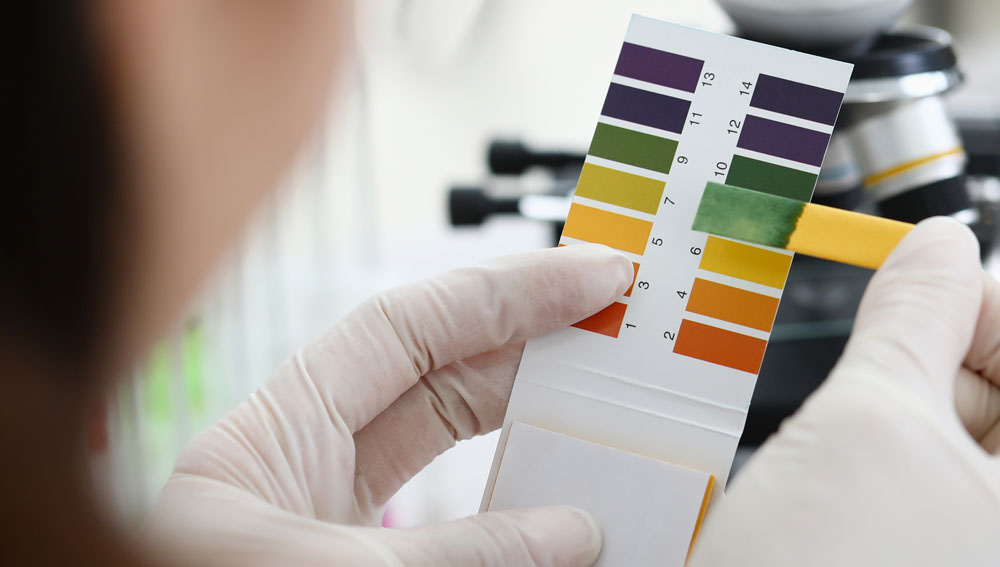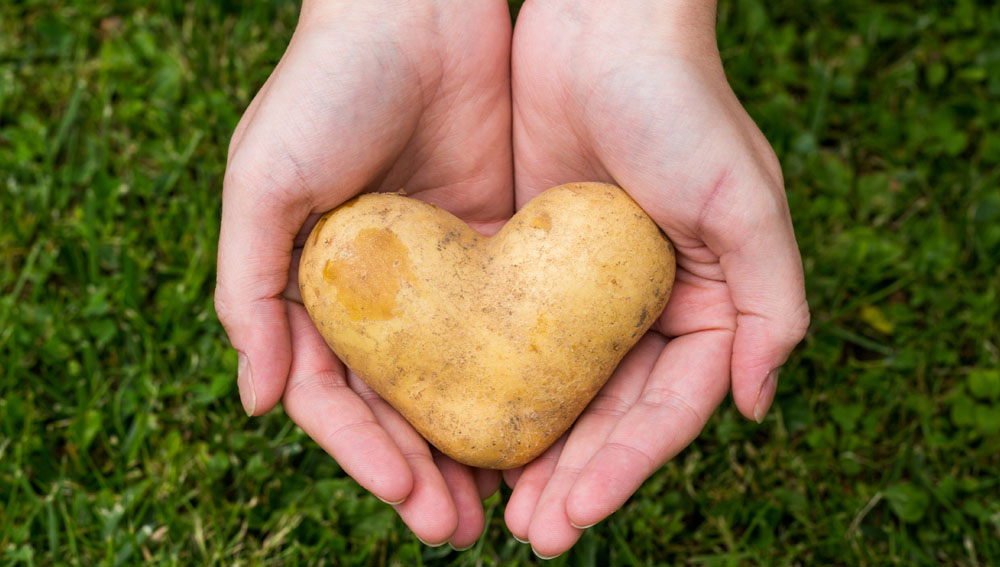07/02/2024
Acid-base balance - What to do against acidosis?

If pain occurs repeatedly, the body loses elasticity and we feel increasingly tired and exhausted, this can be an expression of latent acidosis of the body from a holistic perspective.
We explain what is behind such a disturbance of the acid-base balance, how it occurs and what you can do about it.
A balanced acid-base balance as the basis for health and well-being
All metabolic processes in the body are adapted to certain acid-base ratios. While some enzymes find optimal working conditions in alkaline saliva and the small intestine, others can only really get going in the acidic stomach with its pH value of up to 2.0.
Sophisticated regulation and buffer systems in our body ensure the right balance in every place. Acidic metabolic waste products are primarily excreted via the kidneys and lungs (CO2), but also via the intestines and skin (sweat). In addition, our body has buffer mechanisms such as the carbonic acid-bicarbonate system, which intercepts acids and keeps the pH value of the blood constant.
However, if the acid load becomes too high or there are too few valences available for buffering, the buffer systems become exhausted over time and excess metabolic products are deposited in the intercellular spaces of the connective tissue. This condition is known as latent acidosis.
Acute acidosis or chronic latent hyperacidity?
Doctors speak of acute acidosis in the conventional medical sense when the pH value in the blood falls below 7.35. Such a life-threatening condition, which can occur in the context of serious illnesses such as kidney failure, lung disease or diabetes mellitus, is an emergency that is fundamentally different from chronic latent acidosis in the holistic sense. This tends to progress gradually and inconspicuously, but can also make you ill in the long term.
Our lifestyle makes us angry
The main reason for the high acid load in our body is our lifestyle:
- First and foremost bad diet with fast food, convenience products, sweets and soft drinks as well as too much animal protein (meat, sausage, eggs)
- Lack of exercise, but also competitive sport
- Environmental toxins such as formaldehyde, which is metabolised to acetic acid during detoxification in the body
- Stress and tension
Other factors are
- Mineral deficiency: If there are not enough alkaline minerals and zinc available, our organism can no longer properly buffer acids.
- Chronic inflammation always takes place in an acidic environment and in turn promotes an acidic environment by producing acidic waste products (so-called "metabolic waste products") .
- During radical weight loss diets, protein and body fat in particular are "burnt", which noticeably increase the acid load. You should therefore ensure the necessary mineral and alkaline balance when dieting, but also when fasting.
When hyperacidity makes you ill in the long term
As mentioned at the beginning, every metabolic step requires a certain pH value in order to run optimally. If the pH value at the site of a chemical reaction is suboptimal, this can severely disrupt the metabolism and make us ill in the long term.
In addition, there are problems resulting from our body's attempt to get rid of excess acids:
- Waste deposited in the connective tissue hinders transport processes and thus the supply, function and cleansing of the tissues. Minerals consumed as part of the increased buffering are no longer available to the body elsewhere. For example, there is evidence of increased calcium loss with a high-protein diet. (1)
- There is clear evidence of a link between hyperacidity and bone health. In its attempt to buffer excess acids, our organism also likes to draw on minerals from the bones. This reduces bone density, which in turn favours osteoporosis.
A connection between latent hyperacidity and
- Fatigue, chronic tiredness, conduction kink
- Muscle and joint complaints such as cramps and osteoarthritis
- Rheumatism, gout
- Back pain, slipped disc
- Hypertension, circulatory disorders, arteriosclerosis
- chronic inflammation
- Insulin resistance
- Weak connective tissue, cellulite
Test your acid-base balance yourself

A simple way to get information about our acid-base balance is to use pH test strips, which are used to measure the pH value of the urine several times a day. You can get the corresponding test strips from any pharmacy.
With a biologically balanced pH value curve, the values fluctuate throughout the day between acidic pH 6.0 and basic 8.0. Typically, the urine is acidic in the morning, becomes alkaline to pH 8.0 about two hours after breakfast, and becomes acidic again around midday.
Around two hours after lunch, alkaline pH values above 7.0 to 8.5 occur again with the so-called alkaline flooding. In the evening and overnight, depending on stress and food, the urine can become acidic again and reach values below pH 7.0.
Such a balanced pH value curve is usually an expression of a balanced acid-base balance, which enables enzyme and hormonal systems in the body to function well.
During the production of hydrochloric acid by the parietal cells in the stomach, sodium bicarbonate (NaHCO3) and hydrochloric acid (HCl) are produced by enzymatic conversion of common salt (NaCl) through reaction with water (H2O) and carbon dioxide (CO2).
NaCl + CO2 + 2 H2O ⇌ NaHCO3 + HCl
During digestion, stomach acid is added to the chyme in the stomach. In turn, bases are produced which are mainly transported to the kidneys and excreted in the urine. The resulting increase in the pH value of the urine to around pH 8 after a main meal is known as alkaline flooding.
What to do? - Tips for a balanced acid-base balance
Basic nutrition - the be-all and end-all of a successful acid-alkaline balance
The best remedy for (latent) hyperacidity is an alkaline diet. Contrary to what you might think, flavour is by no means the decisive factor. Despite its acidic flavour, lemon juice with its alkalising components is an alkaline food. Rather, it depends on how the food is processed in our body and whether this results in predominantly alkaline or acidic products.
- Plant foods rich in minerals and with a moderate protein content, such as fresh ripe fruit and vegetables, potatoes and herbs, are particularly rich in alkalis. Most animal products such as meat, sausage and eggs, but also cereals and sugar increase the acid load. The acidifying additives contained in ready-made products should be avoided or only consumed in moderation.
- For a successful acid-base balance, our body not only needs alkaline-forming minerals, but also zinc, which contributes to a normal acid-base balance. If necessary, insufficient minerals and trace elements can be supplied in a targeted manner through nutritional supplements. If you want to improve your acid-base balance, you should also drink enough neutral and alkaline drinks such as herbal tea and still water to enable effective excretion of excess acids via the kidneys.
If you want to know more precisely, you can use the so-called PRAL values (Potential Renal Acid Load) according to Renner and Manz as a guide (2). The more negative the PRAL value, the more alkaline a food is.
Acid and alkaline foods
| Acidic foods | Alkaline foods |
|---|---|
| Alcohol | Apples, fully ripe |
| Baked fruit, sulphurised | Pineapple |
| Collard greens | Aubergines and avocados |
| Fine flours of all kinds | Bananas |
| Ready meals & Ready baked goods | Soft fruit |
| Meat e.g. pork, beef, lamb | Beans |
| Fish | Broccoli |
| Barley | Cauliflower |
| Oats | Buckwheat |
| Millet | Fresh organic fruit juices |
| Chicken | Cucumbers |
| Coffee | Hazelnuts |
| Cake | Ripe pulses e.g. peas |
| Light products | Carrots |
| Margarine | Potatoes |
| Skimmed yoghurt | Garlic |
| Skimmed milk | (Wild) herbs - fresh or as tea* |
| Horseradish | Pumpkin |
| Noodles | Lenses |
| Pepper | Maize |
| Rice | Almonds |
| Rye | Melons |
| Chocolate, chocolate cream | Ripe olives |
| Syrup/honey | Oils, cold-pressed |
| Tomatoes | Pistachios |
| Turkey breast | Beetroot |
| Tuna | Salad |
| Wholemeal flakes | Celery |
| Wholemeal bread | Asparagus |
| Wholemeal flour | Spinach |
| White bread | Citrus fruits |
| Wheat | Courgette |
| Sugar | Onions |

Basic potato soup
Do you fancy alkaline cuisine? Then why not try the alkaline potato soup from our company co-founder Irmtraut Volkmann. It has been the Volkmann family's "secret recipe" for years when it comes to providing the desired alkaline balance quickly and easily in stressful times. (3)
Base-friendly lifestyle
You can relieve your acid-base balance and contribute to greater well-being with just a few simple measures:
- Breathe consciously
Support your acid-base balance by consciously breathing deeply into and out of your stomach. This promotes the excretion of carbon dioxide (CO2), reduces the carbonic acid in your blood and thus supports the deacidification of your body. - Move regularly
Sport intensifies our breathing and blood circulation. At the same time, it boosts the metabolism - and thus the removal and excretion of acids. Moderate outdoor endurance sport is ideal, while competitive sport, which causes a lot of lactic acid to accumulate in the muscles, can even have the opposite effect. This can be counteracted with a moderate training programme, sufficient recovery phases and alkaline-forming foods as well as a broad orthomolecular supply, under which experience has shown that there is hardly any lactate build-up in the tissue or muscle soreness. (4) - Reduce stress
Make sure you relax regularly: you can noticeably reduce your stress levels with moderate exercise, creative time-outs, relaxation techniques, etc. - Go to the sauna
A visit to the sauna relaxes and stimulates blood circulation and the elimination of acids through sweat. - Relieve intestinal pressure
For chronically ill patients, intestinal decongestion carried out under therapeutic supervision with appropriate symbiosis control can provide valuable services.
Your hypo-A-Team
Literature
- Martin, Hans-Helmut: Acid-base balance. Eat better alkaline. UGB Forum, 2/2017, 86-89
- Remer T, Manz F. Potential renal acid load of foods and its influence on urine pH. J Am Diet Assoc. 1995, 95(7):791-797
- Volkmann, Peter-Hansen: The human ecosystem - health is possible, VBN-Verlag 2009
- Volkmann, Peter-Hansen: Cardiovascularoptimisation in competitive athletes. Nutritional therapy and orthomolecular substitution to improve performance. EHK 2008: 57: 664-669
- Volkmann, Peter-Hansen: Gut healthy - human healthy! Quite simply! Microbiome care for more vitality and joie de vivre. VBN-Verlag Lübeck, 2nd edition 2019
- Worlitschek, Michael: Acid-base balance. How to effectively deacidify your body, Trias, 2011
- Worlitschek, Michael: Acid-base balance practice: basics and therapy. Haug-Verlag, 2015































